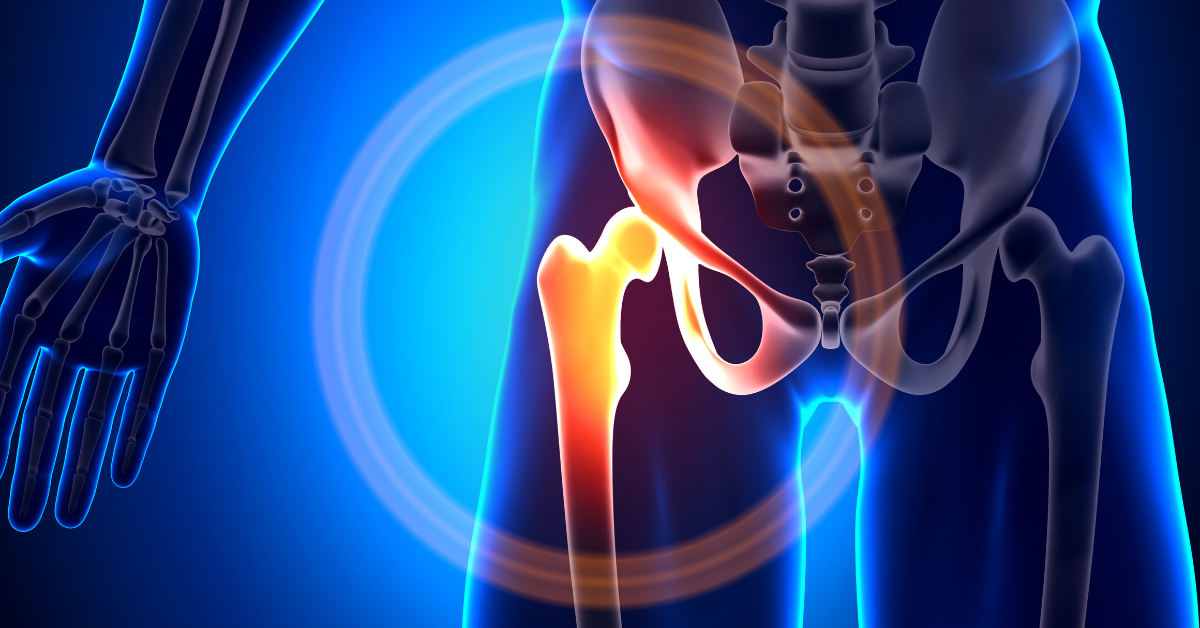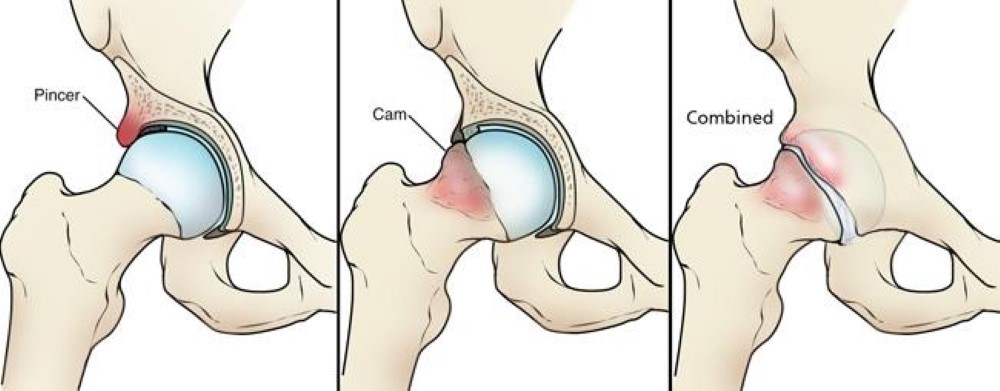The Best Hip Impingement Exercises

Hip impingement is being diagnosed much more commonly in the last five years in athletes. Some studies show that up to 14% of athletes will have signs of hip impingement on an exam¹. So, what are some of the best hip impingement exercises you can do to treat it? Let’s take a deeper look into hip impingement.
What Is Hip Impingement?
Essentially, hip impingement is when there is an overgrowth of bone on either the head of your femur (thigh bone) or on the edge of your acetabulum (the socket). This increase in bone causes pinching, and can cause cartilage or labral damage to your hip.
Symptoms of Hip Impingement
The most common symptom of hip impingement is pain in the groin area with activities that require deep hip bending or rotation. For athletes, they commonly have pain with squatting, lunging, rear foot elevated split squats, and change of direction or deceleration activities.
Snapping, popping and clicking may be associated with hip impingement but are much less specific and often not relevant unless accompanied by pain.
Many times patients complain of “hip pain”, but have pain on the outside of the hip area. This typically is pain that is not actually related to the hip joint and hip impingement, but more often a tendinopathy or bursitis of the muscles and tendons outside of the hip. Read more on figuring out hip pain.
How Can Exercise Help Bone Overgrowth?
This is a complicated question. The short answer is that exercises can’t do anything about the overgrowth of bone on your hip. However, up to 50% of people that have hip impingement findings on x-rays have no hip pain³!
What that tells us is there is hope that through exercise and activity modifications, you can decrease or eliminate your hip pain without needing surgery to remove the bone overgrowth.
What Exercises Can Help Your Hip Impingement?
This will be individual for each and every patient, but we can look at the medical literature for some guidance and general rules of thumb. Most commonly, with symptomatic hip impingement, you will have pain with squatting or lunging activities, decreased hip mobility and hip muscle weakness compared to people without painful hip impingement.
Specifically, with muscle weakness, research indicates you may have up to a 30% strength deficit of your glute muscles, hip flexors and groin muscles!
Basic Hip Impingement Exercises
Initially, we want to start with the basics of restoring strength to these muscle groups. Here are three simple exercises to try:
Once we start restoring strength to these basic hip motions, we want to try to get back to more functional movements. Our first overall goal for anyone dealing with hip impingement pain is to try to get back to pain free squatting. This is an important motion, not only for daily life – such as getting up and down stairs, or up and down from a chair – but especially for athletes getting back to full strength training, running and jumping for their sport.
How Do We Go About Pain Free Squatting?
First, and it may be surprising, we need to control your low back and pelvis position. When you arch your low back and tip your pelvis forward, you decrease the amount of hip space in your hip joints by 10-20%⁴. When you go into a squatting pattern, you need to be able to flex and internally rotate your hip. However, if you let your low back arch too much, you will significantly reduce your range of motion and be more likely to cause pain and pinching with the hip impingement.
Squatting with Hip Impingement Exercises
So, we address your low back control and pelvis position with a variety of core exercises, such as:
Then, we want to get you into squatting patterns where we can adjust your technique, allowing you to turn your toes slightly out to create more space for your hips to bend without pain. We also try some easier squat exercises that emphasize an upright trunk position. The upright trunk position is important to help allow more hip range of motion. The more you bend over the waist, the more your hips have to bend, and therefore the more likely you are to get pain from impingement.
We will start with an exercise like the counterbalance cook squat:
After this, we will recommend that patients progress to more squat patterns that are loaded anteriorly, like a goblet squat or front squat over time.
You may also need to be mindful of your depth as you go through squatting patterns. Try to avoid going below parallel. You can notice in the video above that using a box or bench to help control your depth can be helpful as you re-introduce squatting.
When to Seek Professional Help
As always, each individual person and athlete is unique, and we highly recommend working with a skilled rehab professional with the tools to measure your strength, design a program to target your deficits, and help guide you back into your sport and activities safely.
Just know this: while sometimes hip impingement surgery cannot be avoided, many times, through an appropriate rehab program, you are able to get out of pain and go back to activities without surgery.
At Kinetic Sports Medicine and Performance, we help athletes and active adults manage hip impingement while avoiding surgery. If you would like to speak with one of our doctors of physical therapy about your unique situation, you can schedule a free consultation today! Not sure if your hip pain is hip impingement? Check out our blogs on hip pain to see more on what your pain could be.
Citations:
- Casta, Annie MD. Femoroacetabular Impingement. Current Sports Medicine Reports 14(4):p 276-277, July/August 2015. | DOI: 10.1249/JSR.0000000000000177
- Polat G, Şahin K, Arzu U, Kendirci AŞ, Aşık M. Prevalence of asymptomatic femoroacetabular impingement in Turkey; cross sectional study. Acta Orthop Traumatol Turc. 2018 Jan;52(1):49-53. doi: 10.1016/j.aott.2017.10.001. Epub 2017 Nov 20. PMID: 29157844; PMCID: PMC6136312.
- Swärd Aminoff A, Agnvall C, Todd C, Jónasson P, Sansone M, Thoreson O, Swärd L, Karlsson J, Baranto A. The effect of pelvic tilt and cam on hip range of motion in young elite skiers and nonathletes. Open Access J Sports Med. 2018 Aug 6;9:147-156. doi: 10.2147/OAJSM.S162675. PMID: 30123011; PMCID: PMC6084081.

